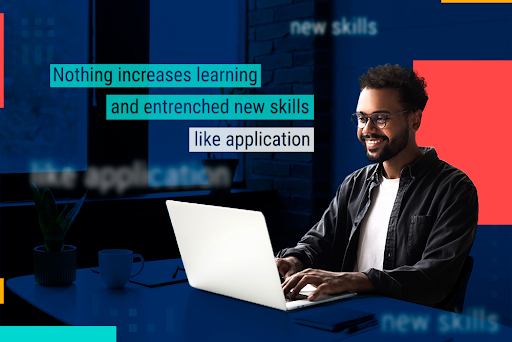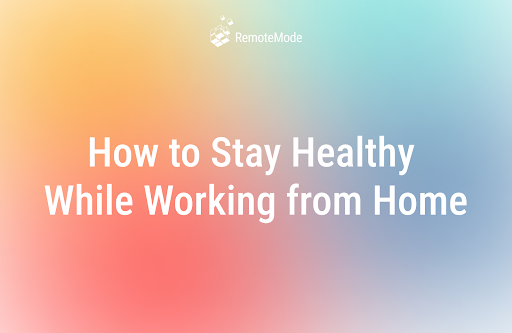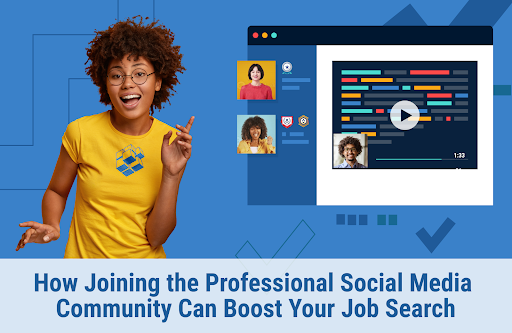Experience Is Worth a Thousand Lectures

Virtual Lab projects immerse you in technology culture as they cement your skills
Nothing increases learning and entrenches new skills like application. You can read all day long about how to drive a car, but until you get behind the wheel, it’s all just theory.
I sat in the passenger seat of the family sedan for fifteen years and watched my mother and father drive the car under every imaginable circumstance. One day I asked my dad why he kept at least one hand on the steering wheel all the time when the car was going straight. He told me about the curved road surface for water drainage and about wheel alignment and tire wear. If he didn’t hang onto the steering wheel, eventually the car would run off the road.
I observed my mom effortlessly navigate heavy traffic while carrying on a conversation and telling me to turn the radio down. After fifteen years, I knew every button, switch, and gauge on the dash, could turn the lights on and off, dim the high beams, run the windshield wipers, and open and close all the windows. I knew how to open the gas cap and shove the nozzle into the hole to add fuel. I had memorized what P, R, N, and D meant, and I knew the gas pedal was on the right and the brake was on the left. What more could I possibly need to know?
Then I attended my high school driver education course. I learned about the laws governing the operation of a motor vehicle. I passed quizzes on the rules of the road and wrote a paper on the best practices for signaling before a turn or a lane change. I got an A in the class. What more could anyone teach me about driving?
Then I got my learner’s permit. Mom handed me the keys and motioned for me to get in—the driver’s side. Behind the wheel! Oh, I had sat in this seat before. I had even started the engine a few times. But suddenly, everything looked totally different. I had shifted two feet from the passenger seat to the driver seat, and my whole world had changed.
Mom got in the passenger seat, buckled up, clamped her hands together until the knuckles turned white, and told me to start the car and drive to the corner. I revved up that old Chevy to five miles per hour and crawled toward the stop sign at the corner—about fifty yards in fifteen seconds. Those were the longest fifteen seconds of my life. My hands, gripping the steering like it was a life preserver in heavy seas, were wet with sweat.
I managed to jerk the car to a stop about ten feet from the limit line. Mom, lips squeezed tight, motioned with her head for me to move forward to the white line on the road. I hit the gas, and we were nearly airborne. The thrust about jerked the head off my shoulders. Mom’s hands flew forward and braced against the dash, which I interpreted as my signal to stomp on the brake. The car slammed to a halt in the middle of the intersection. Luckily, we lived in a pretty quiet neighborhood with practically no traffic. I didn’t hit anything, and nothing hit me, so I considered it a successful maneuver, but my heart was racing a mile a minute.
After Mom recovered and I finally exhaled, she had me “eeeeeeease” the vehicle across the intersection and stop by the curb. We were now a full seventy-five yards from our house, and Mom had to get out and pace the sidewalk a few times. She hadn’t smoked in years, but I could tell she was rummaging through her handbag hoping to run across a stray cigarette.
After an appropriate amount of zen breathing, head rolling, and shoulder stretching, Mom got back in, and the lesson continued. In fact, the lessons continued every afternoon for three weeks. I got more comfortable and Mom stopped reaching for the dashboard at every intersection, although I noticed her pressing her right foot on an imaginary brake pedal whenever she thought I was going too fast. After forty hours behind the wheel with my mom sitting beside me, what could I possibly still need to learn?
I passed my driving test and signed my first driver’s license—proud moment!
The next day, Mom sent me on my first driving errand. My task was to deliver a stack of paper flyers about an upcoming social to one of the worship leaders at our church. She lived only two blocks away, and Mom was busy. Easy-peasy. I took the keys, hopped in the car, and put the stack of papers on the passenger seat next to me. It was summer, and the interior was hot enough to roast a chicken, so I rolled all the windows down. I checked my mirrors, adjusted my blind spots, shifted into reverse, double-checked my surroundings, and put my right arm on the headrest of the passenger seat so I could see clearly through the rear window. I backed carefully but confidently into the street, straightened the wheels, looked ahead, and pressed on the gas.
At that moment, a breeze entered the open windows and blew Mom’s flyers all over the front seat. Not wanting to muff my first driving assignment and cause Mom to have to reprint the wayward flyers, I quickly reached over and put my right hand on the stack to keep the papers from flying out the window.
Without realizing it (I learned afterward), when I leaned over to grab the papers, I also turned the steering wheel to the right. My foot being already on the gas pedal, I continued to press down. In the blink of an eye, I heard a horrific crash. In that split second, I turned my head in time to hurl my face into the very hard, very stationary steering wheel.
When I opened my eyes, all I could see was a white wall directly in front of the windshield. No, wait! That wasn’t a wall, it was the hood of the car—standing straight up. I quickly ascertained that the car wasn’t moving. In fact, the motor wasn’t even running. Hot steam drifted into the passenger compartment on that lovely little breeze.
I took stock of myself. I seemed to be in good order, my limbs and joints still working, my seatbelt snuggly wrapped around my middle. Then I ran my tongue over my front teeth and noted an unusual gap that hadn’t been there when I brushed my teeth earlier that day.
I opened the door and climbed out. I walked around to survey the front of the car. It was bad. The front bumper and grill were crunched like a wadded up newspaper. The radiator spewed green liquid. I wasn’t all that familiar with the engine, but I was pretty sure some of the parts were in the wrong places.
So, what in the world had I hit? Nothing! There was only empty space in front of my car. At that point I knew this was just a terrible nightmare, and I was about to wake up and roll out of bed and start my day all over again. I chuckled at how funny the story of my dream would be when I told Mom about it at breakfast.
Then I looked down the street. It seemed odd that the neighbor’s car, which was usually parked in front of their house across the street from my house, was straddling the sidewalk about three houses down, resting peacefully against a very large tree.
When I saw Mom tearing out of the front door and across the lawn, I figured this wasn’t a dream after all. What more could I possibly have to learn about driving—besides never taking my eyes off the road, and that the car tended to turn in the direction I bent my torso, and that lost papers were much less expensive than a totaled car?
Simulation to the rescue
Mistakes happen. They are our best teachers. Despite all the textbook theory, no lessons stick with us like those we learn from difficult experiences.
My most important, lifelong driving lesson came at a high cost. Back in my day (when the crust of the earth was still cooling) we didn’t have sophisticated driving simulators. How much easier, cheaper, and less painful could my lesson about eyes on the road have been if I had been in a simulator with a fan blowing papers on the seat?
Virtual Lab is RemoteMode’s version of a modern driving simulator. It is a safe place for you to try out your new tech skills, make a few mistakes, experience a few fender benders, and come away far more educated and none the worse for wear.
The projects in Virtual Lab are real problems solved by real professionals every day. You get an authentic taste for what a software developer, network engineer, or help desk specialist experiences in their daily jobs. You feel the bumps in the road that a database administrator encounters. You have to navigate the heavy traffic that a project manager or a security specialist lives with all the time. But you do it within a safe zone, with a professional coach and mentor sitting in the passenger seat, guiding you along the route. If you hit a rough patch, bend a rim in a pothole, or even knock a fender off, it’s no big deal. Just back up and take another run at it until you get it right.
Immersive learning
A Virtual Lab project is an immersive learning experience. You receive a destination (the project deliverable) and a roadmap (a set of tasks with detailed instructions). Your job is to follow the map to the destination, using the skills you have already learned and perhaps picking up a few more along the way. The projects are tailored to your specific career track. If you have studied Java programming, you will work on Java development projects. If you have trained for front end development, you will get projects to build web pages and mobile application interfaces.
The project descriptions are couched in terms of a real business. You imagine you are part of a technology team with an assignment to create a solution to a productivity problem or a product to earn a profit for your company. The projects present you with genuine business problems that working professionals must grapple with all the time. The challenges will test your knowledge and stretch your skills. These are not simple exercises at the end of a textbook chapter. When you complete a Virtual Lab project, you have shown mastery, adaptability, and perseverance.
Level up
The projects in Virtual Lab are designed by working professionals who occupy the jobs today that you will fill on their heels in the near future. They know the problems they are called upon to solve to earn their paychecks, and they have experienced both
“the thrill of victory and the agony of defeat.”
They put what they have learned in the school of hard knocks at your disposal to enable you to learn in a friendly but genuine environment. Your simulation vehicle may have rubber baby buggy bumpers, but you will still feel the cracks and swerves in the road you must navigate.
Just as levels of expertise and commensurate expectation exist in the corporate world, so the Virtual Lab projects are laid out in levels of skill and knowledge. Within a given career track and area of training, you will start with an “easy” project designed specifically for an entry-level job role. When you complete your first project, you will have the opportunity to take on an intermediate-level task that builds on the skills you demonstrated in the previous project but goes more in-depth with harder challenges. At the successful end of the second project, you will move onto a “hard” project. This top-level project tests not only your memory but your resourcefulness.
At each of the three levels, the step-by-step instructions become less pedantic and more directional and organizational. In an “easy” project, your instructions say something like,
“Insert the key, turn the ignition, release the key when the engine starts.”
In a “medium” project, the instructions are more like,
“Start the car.”
And in a “hard” project, you are told simply to drive to the corner and make a right turn, assuming you already know all about starting the car, shifting gears, steering, braking, and so forth. Each level builds on the success of the preceding level and adds more challenge, resulting in greater learning and more satisfaction.
Just as RemoteMode’s training courses are online and self-paced, the Virtual Lab projects are likewise designed for you to work in your own environment at your own pace. Your RemoteMode curriculum is preparing you for a remote work situation, so it makes sense that your Virtual Lab projects move you into the remote work mindset. If you hope to work remotely, being trained remotely is a logical first step toward your future.
Just because you are not in a lab or a classroom, sitting shoulder to shoulder with other students, doesn’t mean you do not have help available to you. Everyone starts their first day in a new job with questions—lots of questions. Your assigned program mentor will be available to you throughout your Virtual Lab projects to answer questions and provide guidance. In addition, the Virtual Lab projects have aids and help built right into them. For every step in a project, the professional designers have anticipated common questions and provided an “Ask the Expert” section with tips, hints, and solution options to keep you moving forward. In addition, every project has a fully developed solution available for you to check out for additional hints or to which you can compare your solution with the professionals’ “answer book” version.
Final Thoughts
In the serious business of job hunting, hiring managers look for two things in potential candidates:
- Does the candidate have professional certifications?
- Does the candidate have experience?
As an entry-level job seeker, your RemoteMode program enables you to earn CompTIA certifications, the premier professional certifications in the tech industry—your IT driver’s license, as it were. Your resume will shine above the rest when the interviewers see one or more CompTIA certs under your name. As an Authorized CompTIA Delivery Partner, RemoteMode is in the best position to ensure you earn those eye-catching certifications.
Along with certifications, your Virtual Lab projects make up your Professional Portfolio of work. You do indeed have valuable experience. You are not just book-trained, you have hands-on experience. Potential employers can look at the project work you have completed in your portfolio and see for themselves the levels of skill you possess. You have real capabilities to bring to their team immediately. That’s the magic sauce that turns an interview into a job offer.
RemoteMode’s full-cycle technical training program offers everything you need to prepare yourself for a career pivot to remote IT work—professionally produced instruction, immersive projects, CompTIA certifications, a professional mentor, guidance in building a powerful social media network, help in creating an attention-grabbing CV, and assistance with initial interview preparation. And it all happens in an engaging and exciting online environment that employs state-of-the-art gamification techniques to make your experience fun and interesting.
Don’t put off the decision to get behind the wheel of your career move. Contact a RemoteMode career advisor today to learn about the exciting road ahead of you and how quickly you can go from learning to earning in the remote tech job of your dreams.
Take the first step to your new remote career!






